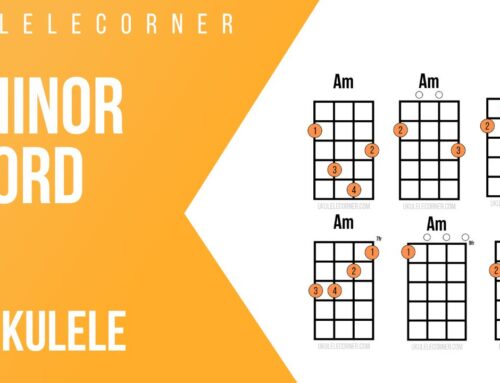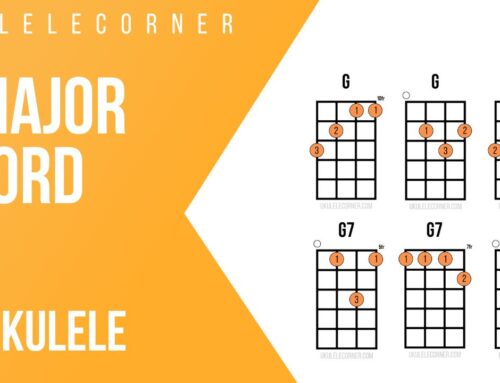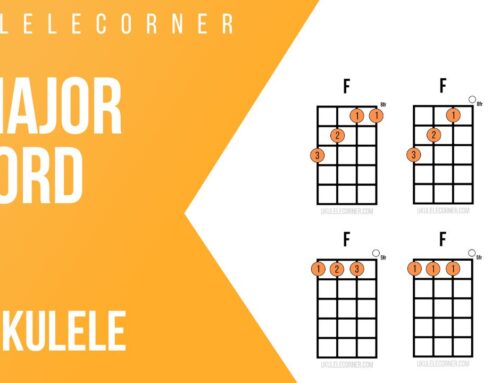In this article I want to tell you why I use classical guitar strings on ukulele. So let’s dive in!
What kind of strings?
One of the most frequent questions I get asked is “What strings do you use?” For a long time I have used the first four strings of D’Addario EJ45c Pro Arte classical guitar strings on my ukulele (for Low-G tuning). And there are several reasons why.
Right-hand feel
The traditional ukulele strings are quite thin. And for that reason they don’t provide enough grip and response in the right hand. With fingerstyle ukulele it’s important to have a string diameter that makes it easy for the right hand to play. The thicker classical guitar strings provide that. While I use a wound fourth string, you can also use a nylon, non-wrapped fourth string for re-entrant tuning and still get a good feel in the right hand.
Tone
Another important factor of the thicker diameter of classical guitar strings is the tone of the strings. I find the classical guitar strings simply provide a warmer, richer tone on the ukulele than ukulele strings. Getting a good sound out of the instrument is so important and so having a string that allows you to shape the sound you want is equally important.
How to Change Strings on Ukulele
Another question I get asked often is how to change strings on ukulele. With the longer classical guitar strings you’ll have a lot of excess string, which is actually great because it means you have plenty of string to make sure everything is secure when you tie the strings at the bridge and the headstock (another plus for using classical guitar strings on ukulele). Here I’ve created a simple tutorial on how to change strings on ukulele.
***
There is much more you can learn about fingerstyle, classical, traditional Hawaiian, and jazz ukulele at Ukulele Corner Academy! Go here to take your ukulele playing to the next level and join Ukulele Corner Academy.




when you say you use first four strings from classical set. is that the first 4 start with low e string
Yes for low G. I use a 2nd E string for the reentrant 4th string.
Aloha Jeff,
I have a 5 string Koaloha with the top “G ” being a double string. What would you recommend?
For a five string with a high and low G you could use a DʻAddario fluorocarbon high G set and purchase and extra low G string
Hi Jeff, I love your ‘ukulele and guitar playing! So my question – when using the D’Addario EJ45c Pro Arte classical guitar strings on the ‘ukulele, you said you use the first 4 guitar strings – so D, G, B, E for the ukes G, C, E, A (in that order)? Do you need to file the nut on the uke to make it a wee bit wider? I play mostly KoAloha ukes too – have not tried guitar strings (usually use the Phd set from Jason Arimoto).
Thanks and blessings to you!
Hi Jill, I haven’t needed to change the nut for the classical guitar strings on my KoAloha tenor ukulele.
Hi, just readingthorugh the differences between the EJ45c and Ej45 sets – do you use the tan colured g string from the Ej45c set?
I use the clear G string and not the tan colored string which has a slightly more metallic sound.
I only have a baritone ukulele. Are bari strings wider than tenor uke strings?
You can use the same classical guitar strings for either baritone or tenor. The tenor strings are higher gauge and are wider. The classical guitar strings are even wider than a typical baritone ukulele set. I personally prefer this as it gives a fuller tone.
Would the same apply for baritone ukulele tuned DGBE? Would guitar strings give it a more mellow sound? Thank you.
The same applies well for a baritone and will give you a more mellow sound as you mentioned.
What about concert and soprano strings?
Hi Steve,
I haven’t tried classical guitar strings on a concert or soprano ukulele. I have had success on a tenor and baritone.
Aloha,
Jeff
love that sharing.
Hello Jeff, I was left a little muddled by the Q and A about which strings you use. I’ll use the convention of the high guitar E being called the 1st string. Tom’s question and your answer seem to suggest that you use 6, 5, 4 and 3rd. Jill appeared to be asking for clarification but you concentrated on her question about nut slots. I won’t guess at what you meant but keep an eye out for a reply. Thanks
Hi Rob,
I don’t use the 6th or 5th strings. I use the top 4 for the Low G tuning. I use the same top 3 strings for reentrant tuning but use another 1st string for the high G 4th string.
Ciao Jeff…non capisco…hai un koaloha tenore con accordatura D,G,B,E….insomma le prime 4 corde di chitarra classica…. quindi su un tenore usi la stessa accordatura del baritono? Grazie.
Aloha Ivano,
I have used the same classic guitar strings on either baritone or tenor and they work well.
Do the heavier string pose a tension threat for the Tenor ukulele. That is more tension that should possibly be on most instruments?? Heavier gauge would seem to indicate possible higher tension? Just asking your opinion?
Aloha Joseph,
I have used these strings on my Koaloha and Kamaka tenors and have never had any issues.
Mahalo,
Jeff
should we assume you use the “normal tension” strings?
Yes–I prefer using normal tension strings.